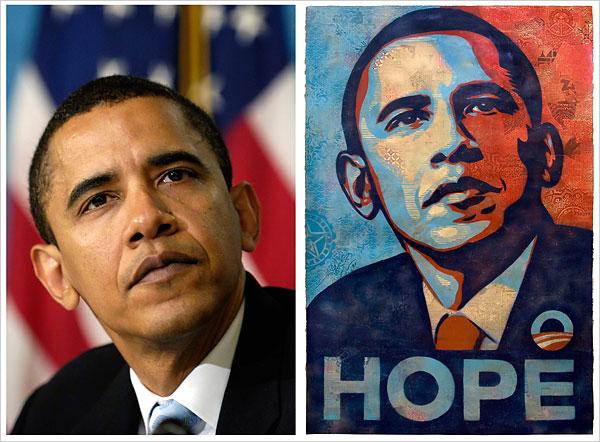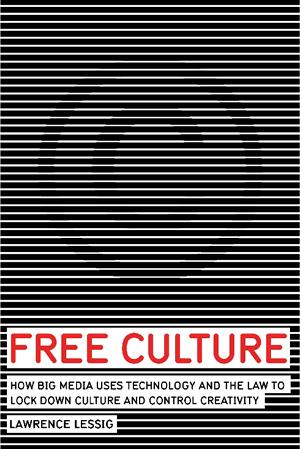If we would all have the same definition of freedom, we would all vote for the same party and all agree with the same ideology. Freedom can rather be found in the multiplicity of its definition. When freedom has only one definition, there is no more freedom. Free culture, defined in a very specific way, is, paradoxically, the opposite of free culture and of culture itself. Let’s think about it, how come we need this tautological qualifier, culture isn’t suppose to be free in itself?
Copyleft/Copyright
Copyleft such as Open content, is another version of Copyright. Another set of laws that ensure the copyright of the authors but in a more permissive way. Again, the possibility to choose in between copyright or copyleft, the fact that it creates an alternative, is a freedom in itself. At the same time, it underlines the fact that the need for copyleft is there because we can’t go back in the past where these issues where not present. Artists were encouraged, during the Renaissance era, to copy the “ancients” and to “remix” the mythology into painting! What happened?


I believe the problem grew not only with the techniques and the technologies allowing to reproduce the artworks and to distribute them to a massive amount of people. It grew along with human narcissism as well as the greatest illusion of modernity: innovation. We are like a 2 year-old child saying “mine” while holding our toy instead of saying “let’s share”. The problem relies more often on the other child that steals the toy and says it’s only his and it always been that way. Copyleft answers a bit differently to the question “who’s the toy property?” It encourages the first kid to share, but also to write his name on it (ego is saved) and motivates the second one to respect the first signature, play with the toy and put his own signature next to the first one (ego is saved). I see it as a kind of copyright in chain that favors the interests of the individuals over the interestes of corporate giants.
I sometimes hear that copyleft is the end of the Author : it’s totally the opposite. Copy left is the proof that we still live in a culture in which the authorship is very important. It shows the importance of a collectivity made out of singularities.
Property
Property is a very complex matter. When I think of Shephard Fairy’s image of Obama, and his struggle with the photographer (Mannie Garcia), I think : “how pathetic are we!” Mannie Garcia claims the copyright of his photography and Fairy desperately defends himself with what is called the Fair use (by the way, I’ve never seen a law as ambiguous as this one!). First of all, Garcia started to react about this appropriation because Fairey, a street artist who does appropriations just like any other street artist, became very popular with the said picture. Secondly, it’s a media image : aren’t they meant to be appropriated? And above all, when I look at both Garcia and Fairy images, it seems to me that the specificity of those images, what we can find in both, is the way Obama stands in it! So Garcia, did, in a certain way, appropriate Obama and his charisma. To whom is the picture? Who actually owns it? Obama himself? Mannie Garcia? All of us (because it’s a media image)? Or Shepard Fairy? I understand the need to create a set of laws in order to avoid this kind of problem. But at the same time, laws are there to palliate, like any other law, to a serious and quite frightening lack of common sense!

Mannie Garcia is fighting an “ego war”, nothing else! He should be so grateful that his picture, which is very ordinary at first glance, is now so popular. It is popular because of what Fairey saw in it. Of course, Garcian suddently sees it and says he his the sole genius behind all this, but he is not! What the artist saw and what he makes us see with the color he used ,is, actually, what I believe, the original artwork.
Appropriating/Sharing
It becomes more interesting when we look at the way that people encourages the ideology carried by the copy left/open content attitude. Creative Commons offers a great space to share creative productions as does CC Mixter for the music. The approach to creative appropriation is different here. The fun in appropriation, is, I believe, to appropriate something that we saw by curious coincidence and that unexpectedly touches us. This is part of the creative process. We saw, read or heard something in an image, a text or a sound, that nobody else has seen, read or heard. We work on it in order to make this tiny thing visible. That’s the originality! Originality lies less in creating than in finding what was already there but feels like original to us. I think that searching on the web for databases of artworks that can be appropriated is a totally different approach to the kind of finding I am talking about here and thus, is not an act of appropriation in the same sense. It’s sharing. It’s much more exciting to appropriate something that wasn’t meant to be appropriated! All those new trends to create a more open culture actually seem to be enclosed in different websites seeking our contributions. They create a system in which artists create to be appropriated and artists appropriate what it is meant to be appropriated. That is a very alienated system : that is exactly what art is not suppose to be (this really is an opinion and I assume it).
Appropriating/Stealing"Good Artists Borrow, Great Artists Steal" (?) Pablo Picasso
I believe copyleft and the different websites encouraging this kind of license have an important role in restoring an ideology stating that we can appropriate any productions of the culture. I definitely think that copyright is for the big company's interests. By putting the license in his artwork, the artist make visible a political position, an adherence. But at the same time, he just defends something that is already there, that creates a double of it. Every single artwork is a remix.
But we do need laws for everything because, unfortunately, common sense is not always there. I believe that ideas stand in the air, but I know that some people really steal, they don’t appropriate, they don’t contribute, they don’t share, they don't respond, they just steal. Picasso believed that stealing was better because he thought that we work more to steal than to borrow. I agree with that, but I guess I'm talking about those who steal and don't work. They steal for what I call the "pride's food” : innovation. Because they probably forgot the "mind’s food” : openness. I’ve noticed something about the people doing that : since they ignore where it comes from, they just seem to go nowhere with that great idea they stole for their artwork. They are making it more confused and pointless : finally it’s not even a great idea. A great idea is nothing if you can’t make it special by what you see in it.
"Good artists borrow, great artists appropriate, bad artists steal" :)
Picasso and I
Some more references :

The last "biennale of Montreal" was entitled "free culture"
Remix Manifesto
Digital Humanities Manifesto

